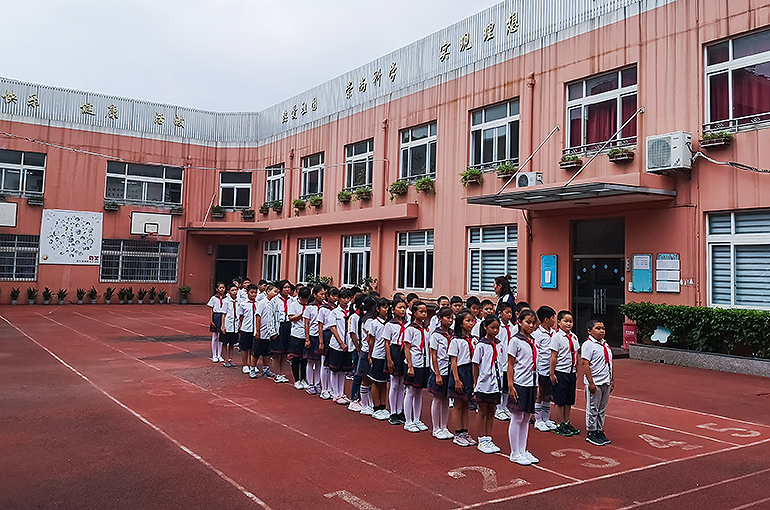 China’s Primary Schools Are Bursting at the Seems, for Now
China’s Primary Schools Are Bursting at the Seems, for Now(Yicai Global) June 13 -- Primary schools in some parts of China are full with no room for new students as a result of urbanization and the country’s shift to a two-child policy. But the problem may be short-lived, as the country’s birthrate is in decline.
Education departments in Gansu and Zhejiang provinces as well as in the cities of Beijing, Guangzhou, Chengdu, and Nanchang have warned of a lack of places for new primary school students in certain areas. For example, the An’ning district of Lanzhou in Gansu said on June 11 that some schools are under pressure due to local population growth, per a media report.
Hangzhou in Zhejiang revealed similar problems in April. The city’s new student count could hit a record high of 150,000 this year, up from 125,000 last year.
The surge was caused by the number of newborns in 2016 and 2017 surpassing that of 2015 after the two-child policy was introduced in 2016, before it starting to fall again. In China, children who enter the education system can be aged from six to eight years. And the overcrowding at schools is also explained by the population influx from rural areas amid China’s urbanization.
Parents in Fujian province told Yicai Global of the wide gap in the level of education between schools in rural areas and county-level cities. Many send their kids to the cities to be schooled even if they work in smaller towns, as transportation is improving and car ownership is rising, they said.
The official warnings issued on school places are linked to the spatial distribution of population, said Ding Changfa, associate professor of economics at Xiamen University. Many rural schools are redundant, whereas those in cities face a huge inflow of new candidates, Ding added.
A large number of young people have moved into the nation’s towns and cities. Some 71.1 percent of Chinese youngsters lived in urban areas in 2020, up from 55.8 percent 10 years earlier, according to official data.
But the struggle for primary school spots may ease in the very near future. The number of babies born in China dropped below 10 million for the first time last year to 9.6 million, just a bit more than half of 2016’s figure. So places should be more abundant when the kids born since 2018 enter the education system.
The shift in demographics is starting to show already in kindergartens, as they have reported empty seats in classes in many large cities this year. In about three years time, that should ripple out to primary schools.
Editors: Shi Yi, Emmi Laine